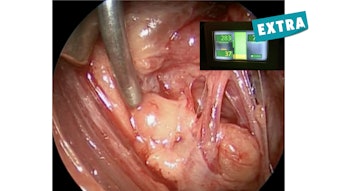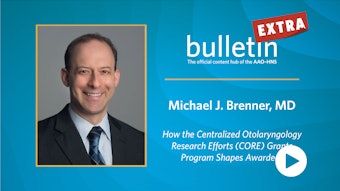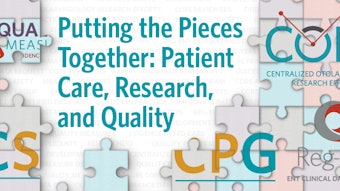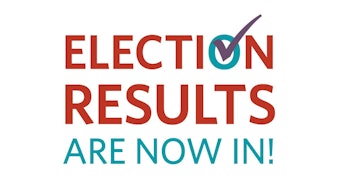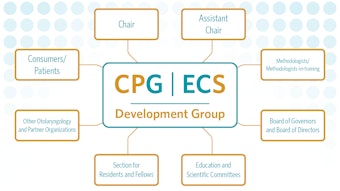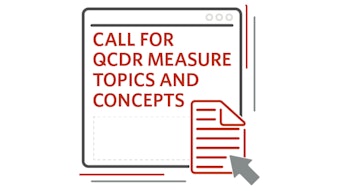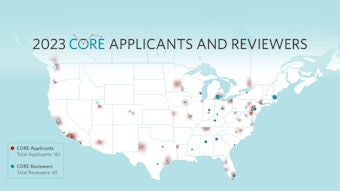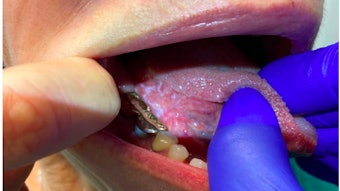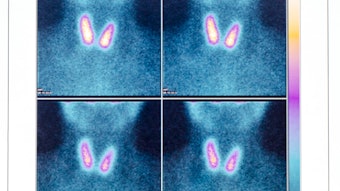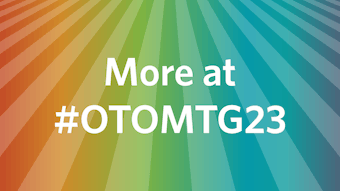How Your Data Helps to Improve the Specialty
Moving into phase two, Reg-ent is delivering on data collected.
Through the Foundation’s ongoing development and maintenance of the registry’s first phase (CMS quality reporting), Reg-entSM is now fully expanded to the phase two goal of providing our members the opportunity to use big data from the Reg-ent de-identified patient data set for research and quality improvement projects. Participating members and their practices across the United States have contributed structured and unstructured EHR data as well as ancillary data: audiogram, patient reported outcomes (PRO), radiology, and laboratory. The following video demonstrates the pathway the data from your practice follows to meet the various aspects of the data registry.
As depicted in the data flow animation, the Reg-ent registry team with the expertise of our technical partner MRO (formerly known as FIGmd), works closely with our members and their practices to receive data from various sources (mainly EHRs) to capture clinical data. Reg-ent has successfully integrated with approximately 25 EHRs to ensure automatic data extraction as well as a secure data integration process.
Apart from fulfilling the MIPS reporting requirements, our team is also working on analyzing and curating the abstracted EHR data to research grade to create the Reg-ent data repository. The Reg-ent team recently launched the Reg-ent Research webpage. Following the research policies and procedures, this data will be made available to answer research questions. Reg-ent will be accepting proposals for noncommercially funded projects. When available, a data request webform will be accessible from our Reg-ent Research webpage. Research proposals will be reviewed and prioritized by the Reg-ent Research Advisory Group (RRAG).

We are in the final stages of piloting the research platform as members dive into trends in the recent rise in vocal fold injections. Reg-ent data was a critical component in supporting a recent publication, Reduction in healthcare resource use through 24 months following sinus surgery with steroid eluting implants in chronic rhinosinusitis patients with and without nasal polyps: a real-world study.1
Reg-ent continues to maintain a Qualified Clinical Data Registry (QCDR) CMS-designation and accommodates reporting and submission for all submitted MIPS performance categories:
- Quality
- Promoting Interoperability
- Improvement Activities
During the 2022 submission period, Reg-ent registry assisted over 100 practices for their MIPS reporting at group or individual level. The data that is received from the practices is mapped on the Quality measure’s data dictionary. For each of the quality measures, there are defined codes and keywords used to identify eligible encounters such as patient’s diagnosis, procedures, age. Etc. Based on the quality action, the performance rate is calculated and displayed on the dashboard. This provides clinicians with a visual representation of their data at a group, location, and individual clinician level, supplying benchmark comparison to their peers within their practice, specialty, and national benchmarks.
The data received from the EHRs is refreshed routinely at regular intervals, which provides performance trends throughout the year to monitor quality and progress. The monitoring of the trends and the regular dashboard review meetings help the practices identify underlying issues with data sources or codes. This offers feedback opportunity from the clinicians and practice administrators to recognize the scope of improvements within their clinical workflow. It also allows for the Reg-ent team to validate the mapping process.
New members and their practices continue to be onboarded and the AAO-HNSF looks forward to the constant growth, development, and diversification of the Reg-ent registry.
To stay connected, sign up for email notifications on the release of research updates from Reg-ent.
Reference
- J. (2023) Reduction in healthcare resource use through 24 months following sinus surgery with steroid-eluting implants in chronic rhinosinusitis patients with and without nasal polyps: a real-world study, Current Medical Research and Opinion, DOI: 10.1080/03007995.2023.2194776
